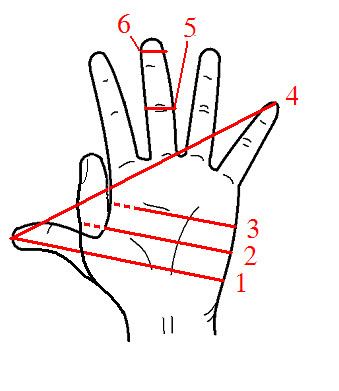 | ||
The shaftment is a unit of length, 6 - 6½ inches or 2 palms, i.e. 15.24 cm. A shaftment is the width of the fist and outstretched thumb. The lengths of poles, staves, etc. can be easily measured by grasping the bottom of the staff with thumb extended and repeating such hand over hand grips along the length of the staff.
Contents
History
It occurs in Anglo-Saxon written records as early as 910 and in English as late as 1474. After the modern foot came into use in the twelfth century, the shaftment was reinterpreted as exactly 1/2 foot or 6 inches (15.24 cm).
Spelling and Etymology
Other spellings include schaftmond and scaeftemunde, and shathmont. It is derived from Old English sceaft, in turn from Germanic skaftaz (shaft) and OE mund, from the Germanic mund, in turn from Indo-European root man (hand.)
Two shaftments make a pes manualis, literally Latin for "a foot fitted to the hand."
This unit has mostly fallen out of use, as have others based on the human arm: digit (1/8 shaftment), finger (7/48 shaftment), palm (1/2 shaftment) hand (2/3 shaftment), span (1.5 shaftments), cubit (3 shaftments) and ell (7.5 shaftments).
